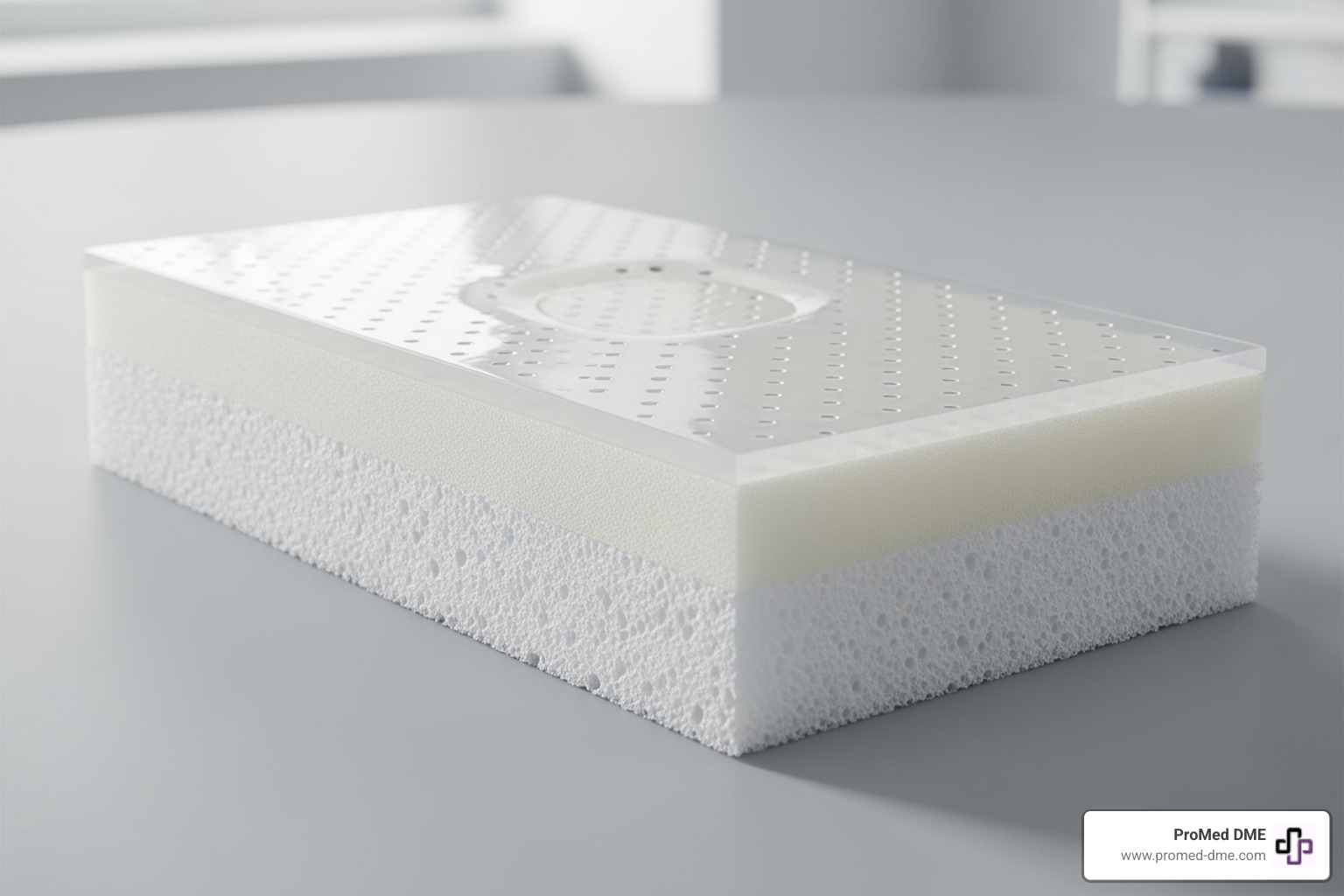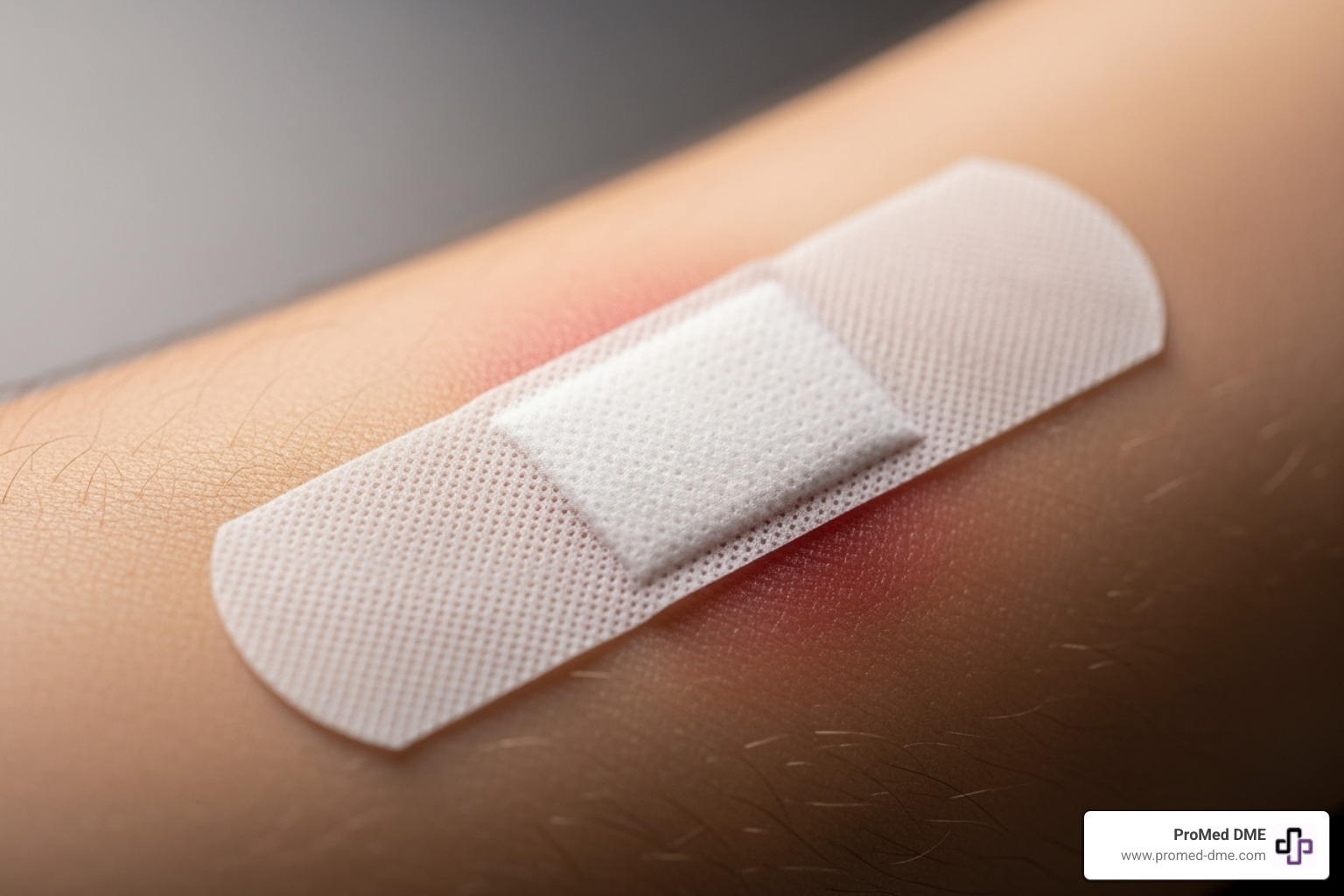Wound Dressing Pads: A Buyer's Guide to the Best Products on the Market
Introduction
When it comes to managing wounds, choosing the right wound dressing pads is essential for effective healing. These pads help keep wounds clean, protect them from infections, and create an optimal environment for recovery.
Quick List of Best Wound Dressing Pads:- Sorbalux ABD Pad: Great value, non-adhesive- Sorbalgon Alginate Dressing: Highly absorbent, ideal for heavily exuding wounds- Cutimed Sorbact: Combats infection, various forms available- Advazorb Foam Dressing: Soft cushioning, suitable for sensitive skin
Selecting the best wound dressing pad requires understanding the specific needs of your wound. Factors such as the type of wound, the level of exudate (fluid), and risk of infection play vital roles in this decision.
Staying informed about the different types of wound dressings—like antimicrobial, alginate, and super absorbent dressings—can help you make an educated choice. Knowing which one to use can speed up your healing process and provide greater comfort.

Types of Wound Dressing Pads
Choosing the right wound dressing pad is essential for effective wound care. Here are the main types you should know about:
Semipermeable Film
Semipermeable film dressings are thin, transparent sheets that adhere to the skin. They allow oxygen to pass through while keeping out bacteria and water. These dressings are ideal for superficial wounds, minor abrasions, and as a secondary dressing.
Benefits:- Easy to monitor the wound without removing the dressing.- Protects against external contaminants.
Impregnated Gauzes
Impregnated gauzes are traditional gauze dressings infused with substances like petroleum, antiseptics, or other medications. They help keep the wound moist and provide antimicrobial properties.
Benefits:- Keeps the wound moist, aiding in faster healing.- Reduces the risk of infection.
Absorbent Dressings
Absorbent dressings are multi-layered dressings designed to manage moderate to heavy exudate. They often combine a non-adherent layer with a highly absorbent core.
Benefits:- Excellent for wounds with significant drainage.- Minimizes adherence to the wound, reducing pain during changes.
Alginate Dressings
Alginate dressings are made from seaweed and are highly absorbent. They are especially useful for wounds with heavy exudate.
Benefits:- Highly absorbent, suitable for heavily exuding wounds.- Forms a gel when in contact with wound fluid, maintaining a moist environment.
Foam Dressings
Foam dressings are soft and highly absorbent. They provide cushioning and are suitable for wounds with moderate to heavy exudate.
Benefits:- Provides cushioning, making it comfortable for patients.- Maintains a moist wound environment, promoting faster healing.
Hydrocolloid Dressings
Hydrocolloid dressings contain a gel-forming agent that helps maintain a moist environment. They are effective for dry wounds and minor ulcers.
Benefits:- Promotes autolytic debridement, aiding in the removal of dead tissue.- Suitable for minor wounds and pressure sores.
Understanding the different types of wound dressing pads can help you choose the best one for your needs. In the next section, we'll discuss how to choose the right pad based on factors like wound type, exudate level, and infection risk.
Choosing the Right Wound Dressing Pad
Selecting the right wound dressing pad is crucial for effective healing. Let's break it down by considering four key factors: wound type, exudate level, infection risk, and skin sensitivity.
Wound Type
Different wounds need different types of dressings:
Superficial Wounds: For minor cuts and abrasions, a simple hydrocolloid or semipermeable film dressing works well. These provide a moist environment that promotes healing.
Deep Wounds: For deeper cuts or punctures, alginate dressings are ideal. They are highly absorbent and help manage heavy exudate.
Infected Wounds: If a wound is at risk of infection or already infected, antimicrobial dressings, like those containing silver, are effective. They help reduce bacteria and other pathogens.
Exudate Level
Managing exudate (fluid that oozes from wounds) is essential:
Low Exudate: For wounds with minimal drainage, hydrocolloid or thin foam dressings are suitable. They maintain moisture without overwhelming the wound.
High Exudate: For wounds with heavy drainage, super absorbent dressings, like thick foam or alginate dressings, are best. They absorb large amounts of fluid and keep the wound environment balanced.
Infection Risk
Infection can derail the healing process:
High Risk: Use antimicrobial dressings, such as those with silver or honey, to prevent and manage infections.
Low Risk: For wounds with a low risk of infection, regular absorbent or non-adherent pads can suffice. These keep the wound clean and protected.
Skin Sensitivity
The skin around the wound can be sensitive:
Sensitive Skin: Choose dressings with gentle adhesives, like silicone foam dressings. These minimize trauma during dressing changes and reduce irritation.
Normal Skin: For more resilient skin, a variety of adhesives can be used. However, always opt for a bandage that provides secure fixation without causing stress to the skin.
By considering these factors—wound type, exudate level, infection risk, and skin sensitivity—you can select the most appropriate wound dressing pad. This not only enhances the healing process but also ensures comfort during recovery.
Next, we'll look at best practices for wound care to ensure optimal healing.
Best Practices for Wound Care
When it comes to wound care, following best practices is essential to ensure optimal healing and prevent complications. Here are some key areas to focus on:
Cleanliness
Before applying any wound dressing pad, clean the wound and the surrounding skin. This helps prevent infection and ensures the dressing adheres properly.
- Rinse the Wound: Use clean water to rinse the wound, removing any dirt or debris.
- Clean the Surrounding Skin: If the skin around the wound is dirty, gently clean it with soap and a soft washcloth. Be careful not to get soap in the wound itself.
- Dry the Area: Pat the area dry with a clean towel before applying the dressing.
Moisture Balance
Maintaining the right moisture balance is crucial for wound healing. Too much moisture can lead to maceration, while too little can cause the wound to dry out and delay healing.
- Hydrogel Dressings: Ideal for dry or slightly exuding wounds, they help keep the wound moist.
- Foam Dressings: Great for wounds with moderate exudate, they absorb excess fluid while maintaining a moist environment.
- Alginate Dressings: Highly absorbent, these are perfect for heavily exuding wounds.
Changing Frequency
Changing the wound dressing pad at the right time is crucial to prevent infection and promote healing.
- Standard Gauze: Change at least once a day or whenever it becomes wet or dirty.
- Hydrogel and Specialty Dressings: These can often be left on for longer periods, depending on the amount of exudate and the manufacturer's instructions. Typically, they may need changing every few days.
- Signs to Change More Frequently: If you notice increased redness, pain, a foul odor, or if the bandage becomes soaked through, it's time to change the dressing immediately.
Monitoring for Infection
Keeping an eye on the wound for signs of infection is essential. Here are some symptoms to watch for:
- Increased Pain: More pain or tenderness at the wound site.
- Redness: Redness that spreads out from the wound.
- Swelling: Swelling or warmth around the wound area.
- Pus or Foul Odor: Any pus or a bad smell coming from under the bandage.
- Fever or Chills: These indicate that the body might be fighting an infection.
If you notice any of these signs, seek medical advice promptly to prevent complications.
Following these best practices for wound care will help ensure that your wound dressing pads are applied in a way that maximizes healing and effectively protects the wound.
Next, let's answer some frequently asked questions about wound dressing pads to help you make informed decisions.
Frequently Asked Questions about Wound Dressing Pads
What is the best dressing for open wounds?
Open wounds need special care to heal properly. Here are some of the best options:
Semipermeable Film Dressings: These are thin, transparent dressings that allow oxygen in but keep bacteria out. They’re great for superficial wounds and minor abrasions.
Alginate Dressings: Made from seaweed fibers, these dressings are super absorbent. They’re ideal for wounds with a lot of exudate (fluid). Products like Sorbalgon help maintain a moist environment, which is crucial for healing.
Foam Dressings: These dressings are also absorbent and provide cushioning. They’re suitable for wounds with moderate to heavy exudate. They help maintain moisture balance while protecting the wound from further trauma.
What are wound pads used for?
Wound pads serve multiple purposes:
Hydrocolloid Dressings: These dressings absorb wound fluid and create a moist environment to promote healing. They’re often used for pressure sores and shallow ulcers.
Absorbent Pads: These are multi-layered and designed to handle wounds with a lot of exudate. They minimize adherence to the wound, making them easier to remove without causing pain.
Protection from Contamination: All wound pads act as a barrier to keep bacteria and other contaminants out, reducing the risk of infection.
What dressing won't stick to a wound?
Non-Adherent Dressings are designed to be painless to remove:
McKesson Sterile Non-Adherent Dressings: These are perfect for wounds that need frequent dressing changes. They won't stick to the wound, which makes them less painful to remove and reduces the risk of reopening the wound.
Silicone Dressings: Products like Proximel Silicone Foam Dressing are gentle on the skin and can be repositioned without losing their adhesive properties. They’re especially useful for sensitive skin or frequent changes.
By understanding these different types of wound dressing pads, you can make better choices for your wound care needs.
Conclusion
At ProMed DME, we are dedicated to providing top-quality wound care supplies to meet your needs. Our comprehensive selection of wound dressing pads ensures that you can find the right product for every type of wound, whether you need something for high-exudate wounds or a gentle option for sensitive skin.
We understand that choosing the correct dressing can be overwhelming, but our expert team is here to help. We offer products that have been carefully selected for their effectiveness, comfort, and ease of use. From alginate dressings like Sorbalgon for heavily exuding wounds to silicone foam dressings like Proximel Silicone Foam Dressing for sensitive skin, we have you covered.
We also provide valuable resources and support to help you navigate the complexities of wound care. Whether you need guidance on Medicare coverage for wound care supplies or tips on best practices for wound management, our team is here to assist you.
For more information on our comprehensive selection of wound care products, visit our wound care supplies page. Here, you'll find all the resources you need to ensure optimal care and speedy recovery for all types of wounds.
Thank you for choosing ProMed DME for your wound care needs. We are committed to supporting you every step of the way, providing products that not only meet but exceed your expectations.
Related Resources & Articles
Stay informed with our informative blog posts.
Discover the ProMed Advantage
& Try Our Products
We offer free shipping and legendary customer service to ensure you receive the
best DME products for your needs.





